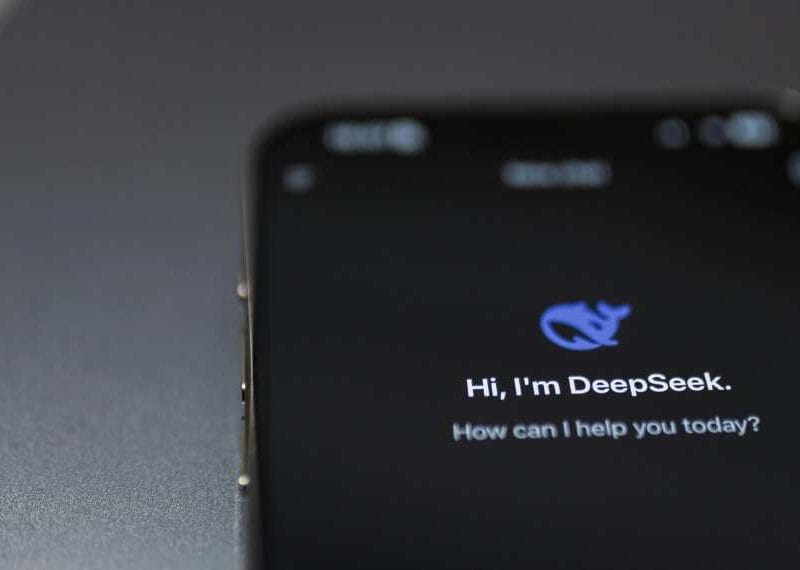How AI is Reshaping Work: Tech Thought Leaders Share Real Examples
Artificial Intelligence (AI) is reshaping the landscape of industries worldwide, revolutionizing traditional processes, redefining job roles, and demanding new skill sets.
As organizations adapt to this transformative technology, we reached out to thought leaders and experts in the tech community to explore a key question:
“In what tangible ways has Artificial Intelligence disrupted traditional processes, job roles, or the skill sets required within your department or organization? Could you provide a specific example of such a change and how it was navigated?”
Their insights reveal the profound impact of AI and the strategies used to embrace this change.
Here’s what they shared about navigating the AI revolution.
Read on!
AI Revealed the Cracks in Everyone’s Workflow
I’ve worked across dozens of VC- and PE-backed companies, and here’s what I’m seeing: most marketing teams have spent the last 10–15 years skating by on top-of-funnel (TOFU) tactics. SEO. Light content. Video. PPC. Whatever could generate leads to pass to sales. But that model is collapsing—and AI is speeding up the collapse.
We’ve shifted into a world where zero-click searches and AI-overview results are siphoning off traditional visibility. And if your content doesn’t build trust and support decision-making beyond the first click, it’s not just ineffective—it’s invisible.
The biggest disruption I’ve seen from AI? It’s separating teams that only know how to capture contact info from those that can actually accelerate funnel momentum. AI has become a force multiplier for me and my team because we’ve always been focused on mid- and bottom-of-the-funnel (MOFU and BOFU) execution. That’s where objections get handled. That’s where revenue is won.
At one previous public company, I had a 50+ person team to run demand gen. Today, I’m achieving better results with a much smaller team—because we’re using AI to remove bottlenecks, repurpose proven content, and increase personalization at scale. We feed it insights from sales, customer success, and product usage. That lets us execute faster, without sounding generic.
But here’s the real point: AI doesn’t replace strategy. It just makes your gaps louder. If you don’t understand how your content influences revenue—at every stage of the journey—AI won’t save you.
The marketers who win next aren’t the ones who publish the most. They’re the ones who understand how trust compounds—and use AI to build it faster.

Kurt Uhlir
Chief Marketing Officer, eZ Home Search
Disruption in Development, Quality, Skill Development, and Collaboration
In our software engineering group, it has disrupted the way we’ve thought about development and quality processes, the way we’ve organized primarily around building intelligent testing and API-testing using AI. The biggest change happened in how we test and review our code as we used to spent a lot of time manually testing and ensuring the quality in PR’s.
We deployed intelligent testing solutions that can automatically generate test cases, mine potential vulnerabilities, and forecast the system behavior with the historical CPU/IO performance data mined from instruments. This conversion essentially changed our methodology from problem-solving-handling-affairs to monitoring-checking-having-the-taste.
Now, we analyze the production system data with AI tools continuously so that we can predict a performance anomaly long before our connected end-users feel it. This shift demanded that we be learning new skills in machine learning interpretation and automated code generation tools. We had to figure out how to complement AIs’ efficiency with our own working methods and independent critical thinking and creativity.
Handling that transition required building in-depth training programs where the more experienced members of the team supplemented others in integrating AI tools. We collaborated with data science experts to understand system constraints and biases. The results have been much faster resolution of issues, and an improved quality of code. But we learned it was important to retain a human in the loop and to always have AI augment rather than replace human architectural decision making and creative problem solving in software development.

Supratim Sircar
Software Engineer, Cisco
AI Transforms Marketing Agency Without Replacing Staff
I run a marketing agency, and my clients and I are thinking about AI all the time. It has definitely changed how we work at Mandel Marketing, especially when it comes to content creation. It hasn’t replaced anyone on the staff, though it has perhaps reduced our need to hire more people than we otherwise would without AI tools. It has also shifted what our team spends time on. Instead of spending hours coming up with a rough first draft, for example, we might now use AI to get a solid start after a human-brainstorm on concepts. This could be blog outline, advertising copy, or even search keyword ideas.
This means that we have to train our team on all the latest AI tools and keep them up-to-date as the industry changes. Thus, we need to look at all the tools (ChatGPT, Gemini, etc.) as well as industry-specific tools that, for example, are focused on marketing analytics, or, say, on video production.
AI Shifts Marketing Roles From Generalists to Specialists
AI has changed how we handle reporting and copywriting. Tasks that used to take hours, like pulling keyword data or drafting blog outlines, are now done in minutes using AI tools. This has shifted our hiring focus. We no longer need generalists who can do everything—we want specialists who know how to prompt, edit, and QA AI output.
One example: we used to have a content coordinator manually draft blog outlines. Now that role is more about refining AI drafts and optimizing them for SEO. We didn’t eliminate the role—we upskilled the person. They’re more productive, and the work is of higher quality.
Small Business Content Creation Triples With AI
AI completely transformed how we handle content creation for our small business clients. Previously, our team spent 15-20 hours weekly writing blog posts and social media content manually. Now, we use AI to generate initial drafts, allowing our writers to focus on strategy and refinement instead of starting from scratch.
This shift required retraining our content team to become “AI editors” rather than pure writers. The result? We’ve tripled our content output while maintaining quality, and our team members have developed more strategic, analytical skills that make them more valuable to clients.
AI Security Tools Free Staff for Strategic Work
In our department at Parachute, one major shift came when we introduced AI-driven tools for cybersecurity monitoring. Previously, our security analysts manually reviewed logs and flagged unusual activity. It was slow, tedious work. Now, AI systems run 24/7 in the background, identifying threats and triggering alerts almost instantly. This has allowed our team to focus on more strategic efforts—investigating complex incidents and improving our clients’ defense plans. The transition wasn’t seamless. We had to retrain staff and adjust workflows, but the payoff in speed and accuracy made the change worthwhile.
A specific example I remember clearly is when we started using machine learning for ticket triage in our support center. Calls used to be routed manually, which often delayed resolution. After integrating AI into our helpdesk platform, the system began tagging and routing tickets based on historical patterns and urgency. One of our senior techs, Kyle, was skeptical at first. But once he saw how much time it saved and how it prioritized the right issues, he became one of its strongest supporters. We still review AI decisions daily to ensure accuracy, but the improvement in service response has been significant.
If you’re seeing similar changes in your field, my advice is to lean into the learning curve early. Ask questions. Take courses. Stay curious. We encouraged our team to explore short certifications in data analysis and automation tools. It helped them feel more confident and stay relevant. Change can be uncomfortable, but adapting quickly is often the difference between falling behind and leading the way.

Elmo Taddeo
CEO, Parachute
EVhype Upskills Team While Automating Customer Support
AI has transformed how EVhype does things. From customer service to data analysis to product recommendations, so many once-traditional services have been uprooted. One concrete shift was in our customer support department. We used to handle this process manually, which was slow and occasionally inconsistent. On the other hand, we automated most of our typical customer inquiries about EV chargers, availability, and installation services using AI-powered chatbots.
Not only did the AI system itself learn rapidly from user interactions and start returning highly accurate, real-time answers, but it was also able to reduce response times by 40% while empowering our team to address the more complex, high-value cases. And it was not only about efficiency: users got instant, 24/7 support and loved it. As a result, the knowledge set that we began to require of our customer support team was far greater than simply how to answer the quick question of an everyday user, to instead how to problem-solve for the user and how to build a relationship with a higher-value user.
So we up-skilled our team, delivering training on how to utilize the best in AI, to provide human-led service for more complex issues. The bottom line from all of this is that AI can have a huge impact on efficiency and accuracy, but rolling it out needs to be done in step with team development, enabling employees to use these tools to help them do their jobs, as opposed to replacing them.

Rob Dillan
Founder, EVhype.com
AI Chat Agents Replace Humans for Bedding Company
We used to have customer care agents manning a “live chat” feature on our website. Website visitors would be able to get answers to their questions in live time, increasing conversion and average order value. The main limitations and drawbacks of this system were that it cost a lot of time, energy, and money to have human agents manning the live chat, and if we wanted to hire Americans only, we really could only offer the chat capability during normal 9-5 MT business hours.
Enter, LLMs like ChatGPT: Now, we have AI chat agents that are trained on every page on our website and every article ever written about us, for which we can tweak response tone and length, that never gets tired or discouraged, and which can answer live chats in perfect English 24/7. For a low-stakes product like bedding, AI chat agents are a gamechanger for our business, and have eliminated our need for humans to do this function. Our website visitors get better answers, faster, at all hours of the day, for a fraction of the cost.

Colin McIntosh
Founder, Sheets & Giggles
SEO Team Pivots to Strategy as AI Handles Data
AI has shaken up how we work, no doubt. In SEO, routine tasks like keyword research and data analysis used to eat up hours. Now, AI tools handle those fast, freeing our team to focus on strategy and creativity. For example, we once spent days sifting through keywords manually. AI now generates insights in minutes, letting us spot trends quicker and act on them. This shift means our staff needed to pick up skills in interpreting AI outputs rather than doing grunt work. It wasn’t just a tech upgrade; it changed how we think about our roles.
Adapting wasn’t always smooth. Some team members initially resisted, worried AI would replace them. We tackled this by emphasizing AI as a helper, not a replacer. Training sessions focused on blending human judgment with AI speed. The result? A smarter, faster team that’s more future-ready and less bogged down by tedious tasks. AI’s impact isn’t theory; it’s real, reshaping jobs every day.

Mike Khorev
Growth Advisor, Mike Khorev
AI Matching System Cuts Recruitment Time in Half
One of the most tangible changes has been in our candidate vetting and client-matching process, which traditionally required hours of manual resume screening, back-and-forth emails, and intuition-driven shortlisting.
We replaced that process with an AI-enhanced pre-screening and matching system that analyzes hundreds of data points — from candidate tech stack proficiency and past performance to cultural fit indicators and time zone availability — and then cross-references that with the job scope to recommend the top three matches.
This shift reduced our average time-to-candidate presentation from 7 days to just 4.2 days, and freed up our human recruiters to focus on higher-value relationship-building, onboarding support, and client education.
From a talent standpoint, this change required us to upskill our recruitment team, equipping them with a more data-literate mindset and familiarity with AI-assisted workflows. We invested in internal training so our team could interpret and challenge AI-driven recommendations — turning recruiters into strategic hiring advisors rather than just screeners.
On behalf of the Techronicler community of readers, we thank these leaders and experts for taking the time to share valuable insights that stem from years of experience and in-depth expertise in their respective niches.
If you wish to showcase your experience and expertise, participate in industry-leading discussions, and add visibility and impact to your personal brand and business, get in touch with the Techronicler team to feature in our fast-growing publication.















